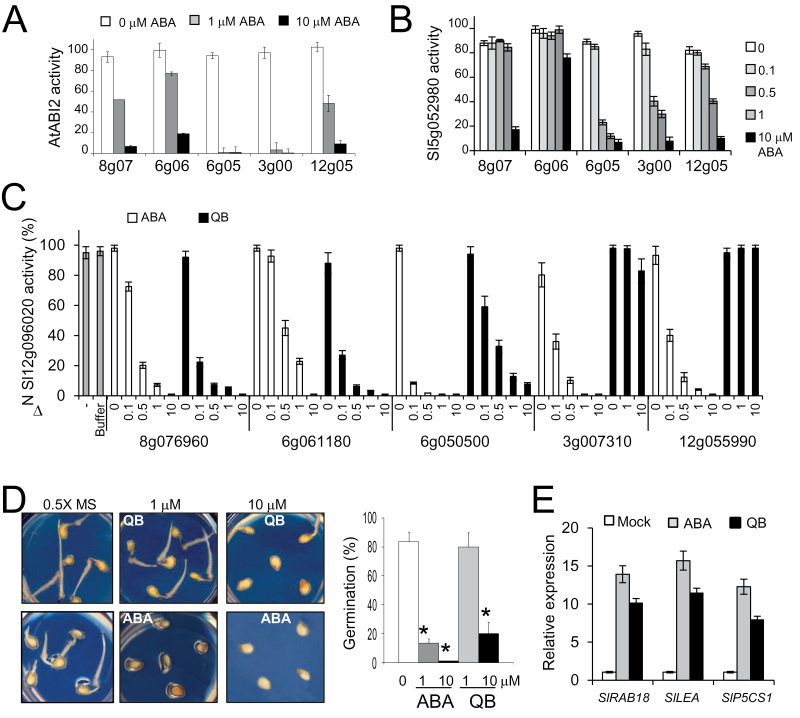Fig. 4.
ABA-dependent PP2C inhibition mediated by tomato ABA receptors. PP2C activity was measured in vitro using a phosphopeptide substrate in the absence or presence of ABA at a 1:4 ratio of phosphatase:receptor (0.5:2 μM stoichiometry). Data are averages ±SD for three independent experiments. (A) ABA-dependent inhibition of AtABI2 by tomato receptors. Values represent percentage activity compared with 100% in the absence of receptor and ABA. (B) Phosphatase activity of tomato 5g052980 in the presence of tomato receptors. (C) Phosphatase activity of tomato ΔN 12g096020 PP2C in the presence of tomato receptors. PP2C activity was measured in the absence or presence of 0, 0.1, 0.5, 1, or 10 μM ABA or QB. The column labelled as buffer contained an equivalent volume of HIS elution buffer and 0.5% DMSO. (D) Inhibition of tomato seed germination is more sensitive to ABA than QB. Seed germination was scored 72h after sowing. * indicates P<0.05 (Student’s t-test) when comparing data of plates supplemented with ABA or QB with plates lacking these chemicals. (E) QB treatment induces expression of ABA- and stress-responsive genes. Ten-day-old tomato seedlings were either mock treated or treated with 10 μM ABA or QB for 3h. The histograms indicate the relative induction by ABA or QB treatment of the indicated tomato genes with respect to mock conditions (value 1). (This figure is available in colour at JXB online.)

